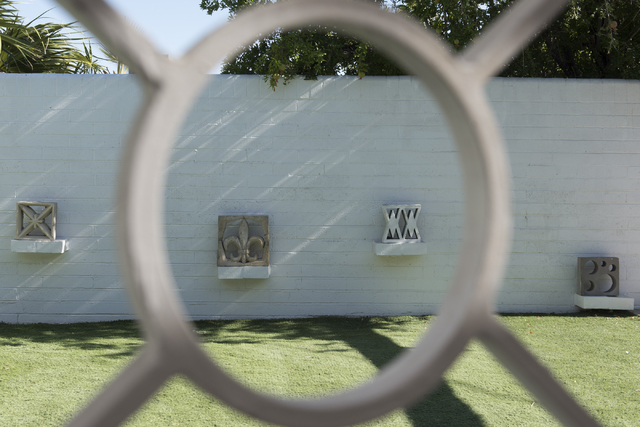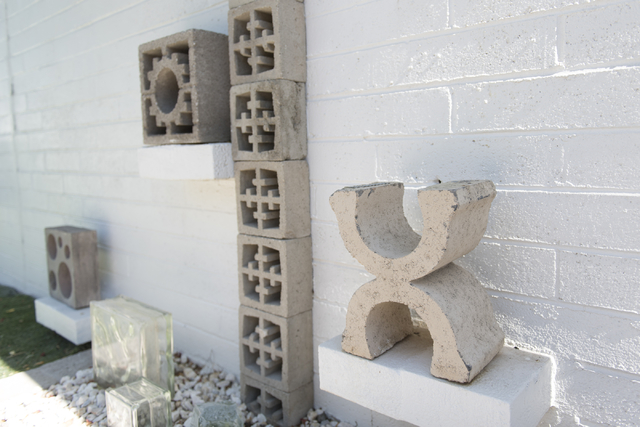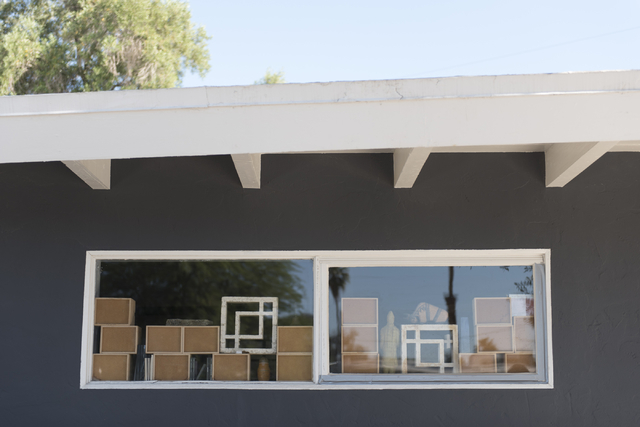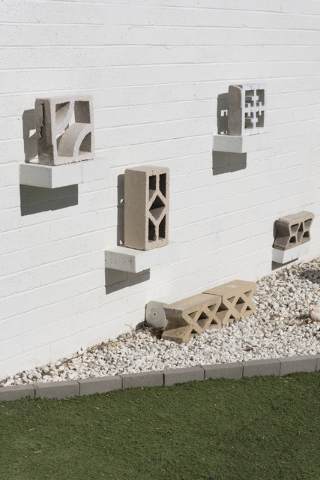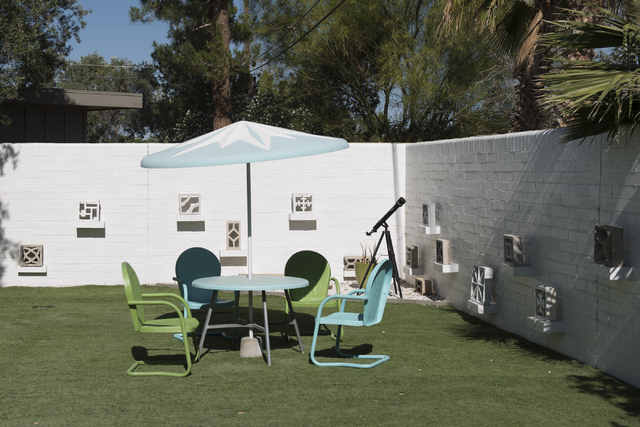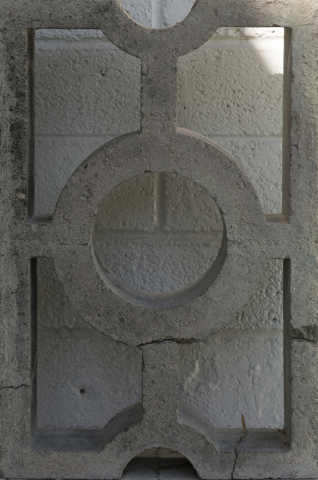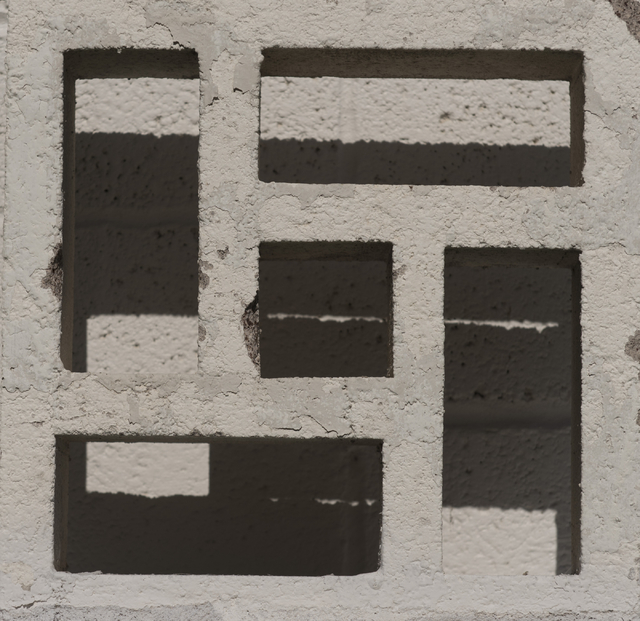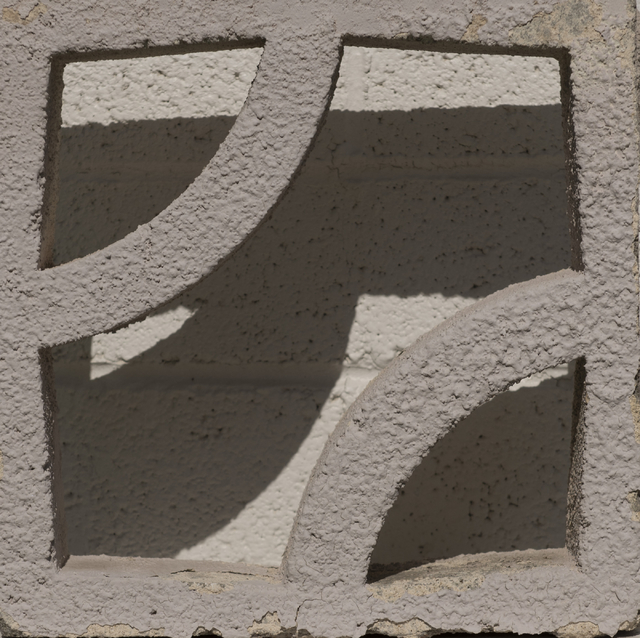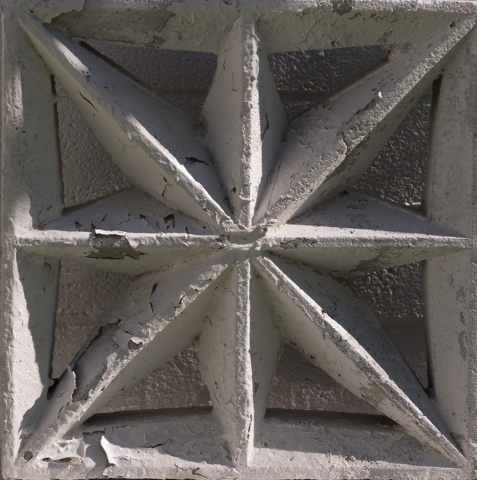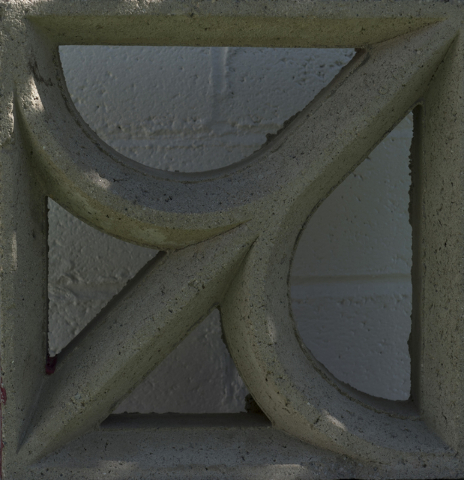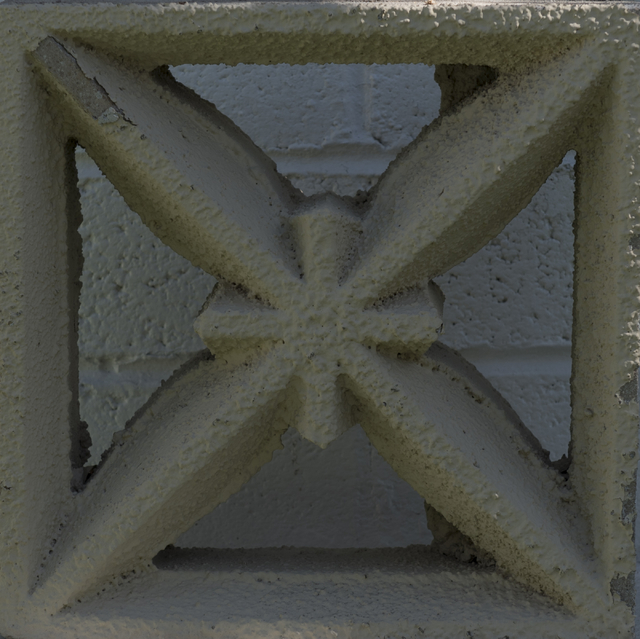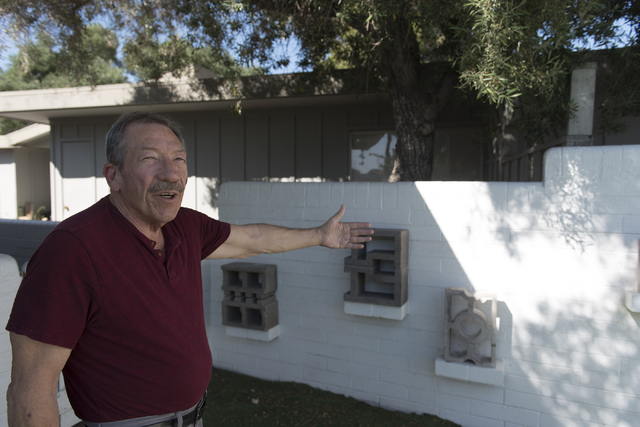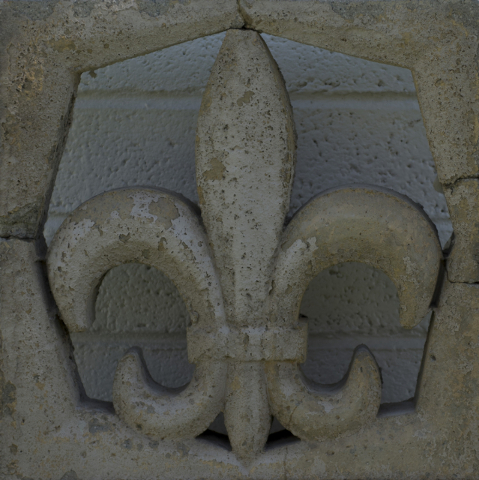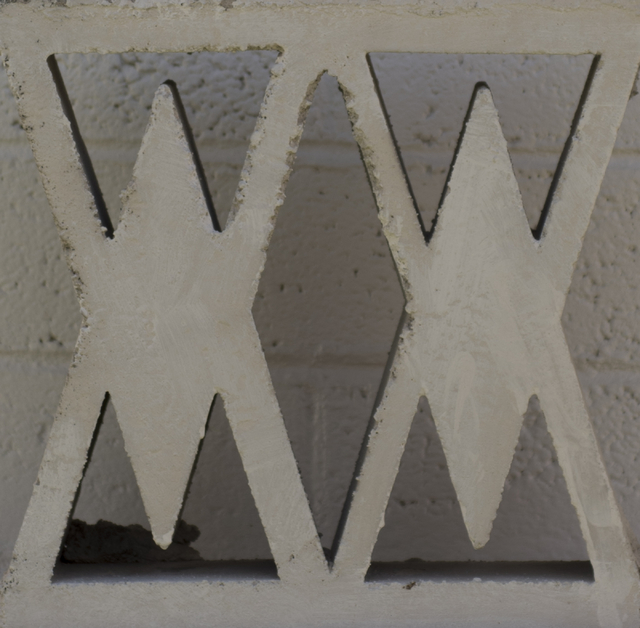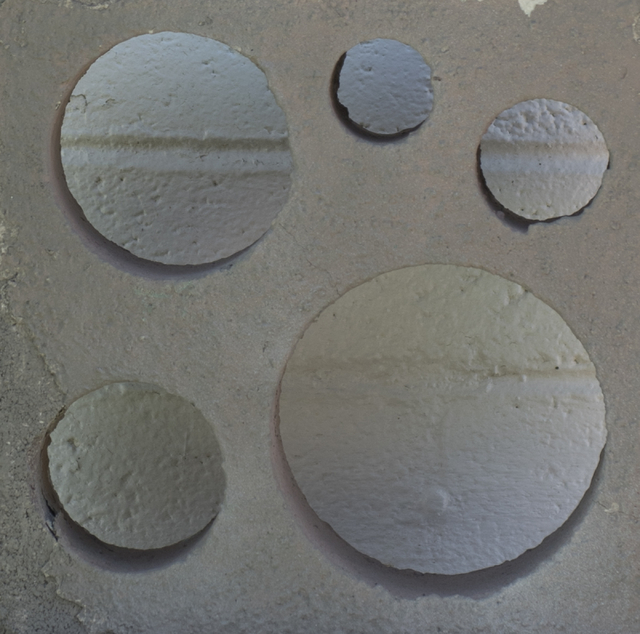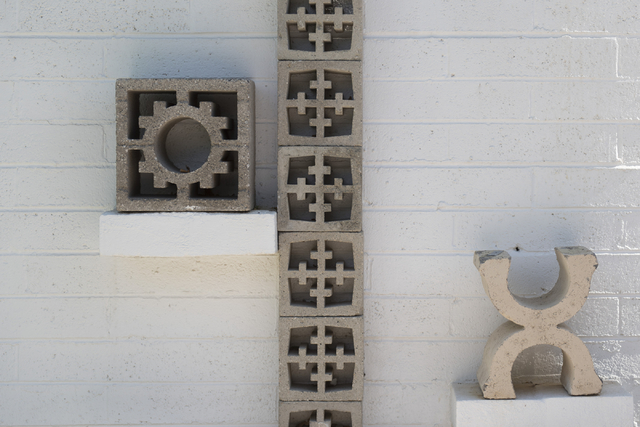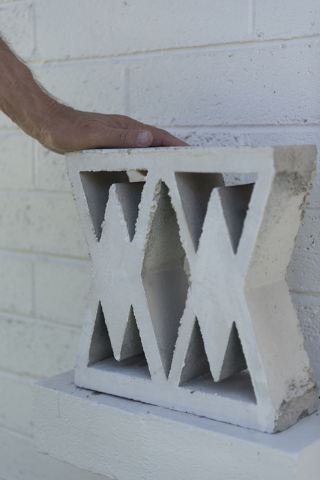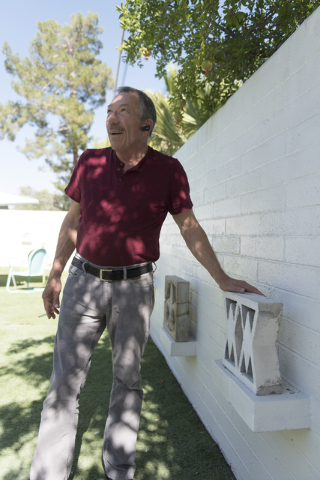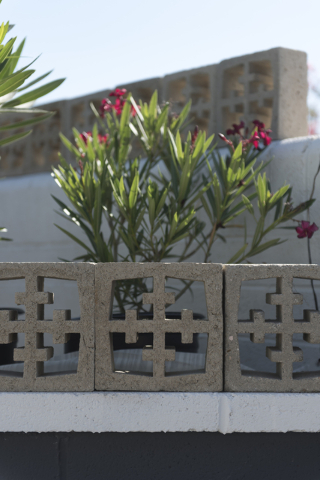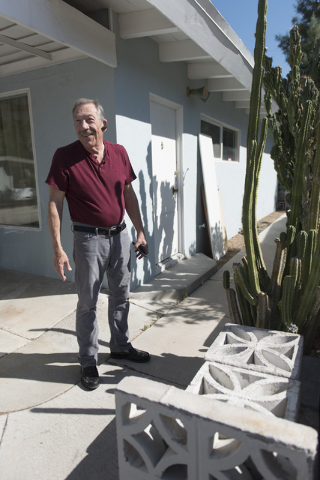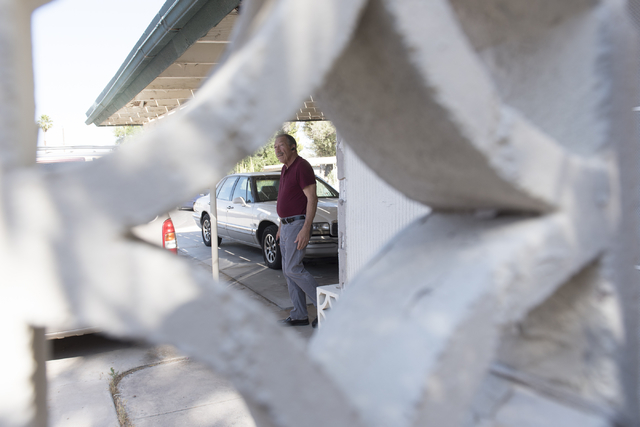Concrete blocks that look a lot like art in Las Vegas
Spend enough time roaming one of Las Vegas’ vintage neighborhoods with Realtor Jack LeVine and you’ll start seeing geometric patterns everywhere. They’re in the wrought-iron columns that hold up porches, LeVine points out, and in the raised square panels that decorate front doors.
But what really excites LeVine, a midcentury architecture buff known to friends and clients as “Uncle Jack,” is the variety of concrete breeze block walls with cutout designs ranging from four-leaf clovers to floating bubbles.
“I love the look of them—the trompe l’oeil effect where you see different things depending on where you focus your eye,” LeVine says.
LeVine’s so enamored of the cement creations, in fact, that he’s gathered samples of dozens of patterns — 34 at last count — in his own personal backyard historic preservation project. They were rescued from rubble piles and the backyards of foreclosed homes.
LeVine remembers his first score, a double squiggle pattern that “looked like a tattoo on a hipster’s arm.” It was 2007, just after the local housing bubble had burst and prices had started to plummet. He’d been tooling around the city taking pictures of design details for his blog, VeryVintageVegas.com.
“I’d started writing about all the unique characteristics and vintage neighborhoods that those of us in the know were already in love with and everybody else deserved to know about,” says LeVine, who has a gravelly voice and a ready smile.
“I came to realize that the blocks were an important part of the architecture of the ’50s and ’60s. And then once I was really tuned into them, I realized there were ones laying around in yards, or part of knocked-over fences that couldn’t be put back together again.”
A thief nabbed the double squiggle from LeVine’s Southridge home, but soon there were others: an industrial-looking cog, an atomic symbol, the elegant swoop that he calls his favorite.
LeVine and his partner, Mark Adams, began displaying them on shelves built into a backyard wall, and “the collection started showing up,” LeVine says.
Former Nevada Lt. Gov. Lonnie Hammargren — a collector in his own right whose home is a hoarder’s lollapalooza of telescopes and figurines — gifted LeVine with a double-horseshoe design. Dubbed “Sarno block” after casino entrepreneur Jay Sarno, the wall pattern can still be seen at Circus Circus.
One of LeVine’s newest acquisitions, a fleur-de-lis motif, came from local sculptor David F. Hardy. Hardy dragged the broken pieces from a collapsed wall at the Skyline Villas apartment complex off Maryland Parkway, once a Hollywood hangout, then glued them together.
“It was awesome to be able to hand that one over to Jack,” Hardy says. “He’s the number one guy for midcentury in Vegas. I knew it would go into a good collection.”
Adored by midcentury modern enthusiasts and equally reviled by others who see them as tacky, the decorative concrete walls came into vogue during a time when architects were experimenting with geometric forms and new materials. Often seen in warmer climates, they provided shade and privacy, while allowing air to circulate. Architect Edward Durell Stone, credited by some with pioneering the form, erected massive facades made of breeze blocks for buildings such as the U.S. Embassy in New Delhi, completed in 1959.
But bold patterns fell out of favor and lot sizes shrank in the latter part of the 20th century, LeVine says, as housing developers began to turn toward the neo-Mediterranean styles so prevalent in Las Vegas today. Many of the walls have been destroyed by renovating homeowners, the designs lost to time.
That makes LeVine, who also sits on the city’s Historic Preservation Commission, a kind of heirloom farmer, preserving threatened species for future generations to enjoy. His nonedible varietals just happen to be covered with a patina of mortar and paint.
“In all the time I’ve been doing historic preservation in Los Angeles and Las Vegas and helping out friends in San Francisco and Palm Springs, I have never seen someone who has that kind of collection,” says Mary-Margaret Stratton , a preservationist and author of the guide “Mondo Vegas: Touring Mid-Century Modern Las Vegas.”
LeVine says he only picks up blocks that have been clearly abandoned by homeowners—where “the flippers are going to throw it all away because they don’t give a damn.”
His 1954 desert modernist house is packed with interesting features, such as the Mondrian-inspired cabinets in the kitchen and the original Fibrella patio furniture salvaged from a hoarder’s home. A restored 1920s Weaver tire changer sits next to the driveway.
The blocks, however, are the piece de resistance. On a tour of his cheery AstroTurf yard, LeVine points out with delight how one particular pattern, when assembled into a wall, fools the eye: Look at the center of a single block, and you’ll see a diamond perched inside a square. But focus on the intersections of the pieces, and a sea of interlocking circles emerges.
Recovering some of his specimens wasn’t easy: One homeowner had a patio full of squares with Celtic cross designs that he wanted to get rid of. Every hole was clogged with Bermuda grass; it took LeVine hours with a steak knife to get it all out.
An Asian-inspired lattice came from a wall in front of a house that had burned down. When LeVine tried to recover it, all but one of the blocks crumbled to dust in his hands.
He indicates a pile of concrete with a flower-petal grid that he hauled in a few days before, from a house where the new owner was going to discard them.
“I don’t know what to do with these, but I rescued them,” he said. “I guess it is an obsession.”
Correction: A previous version of this story incorrectly spelled the name of Mary-Margaret Stratton.



